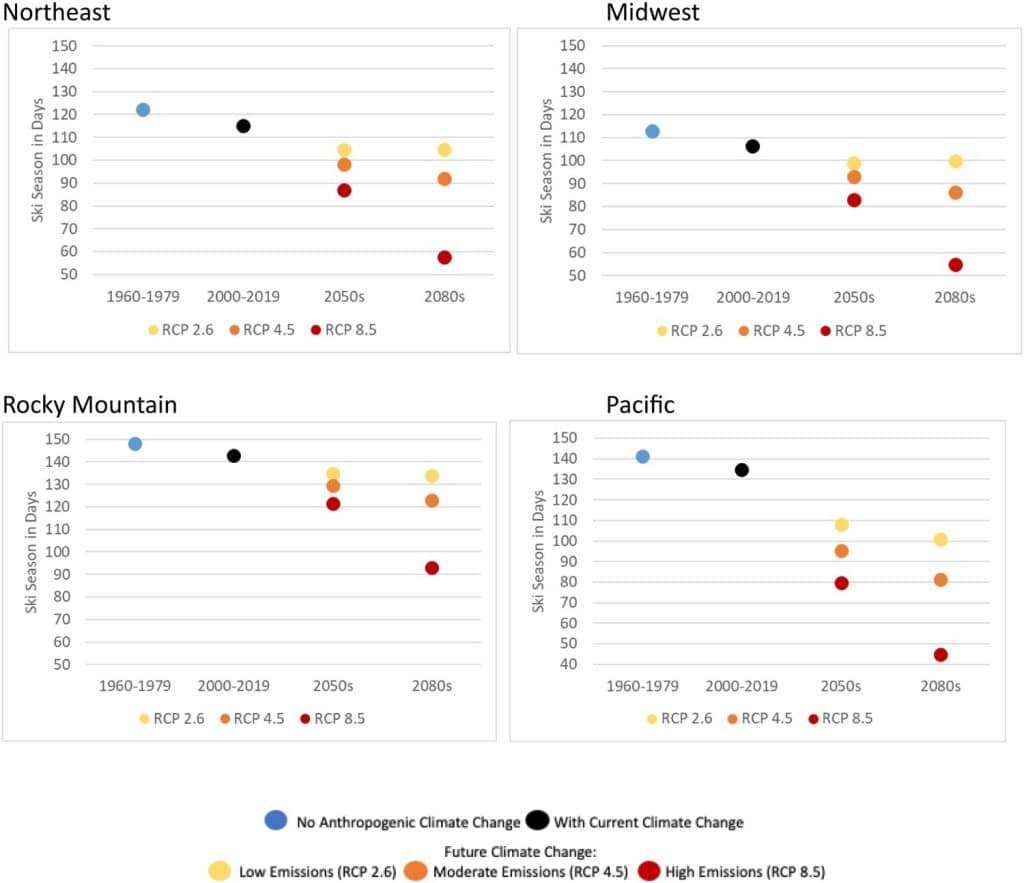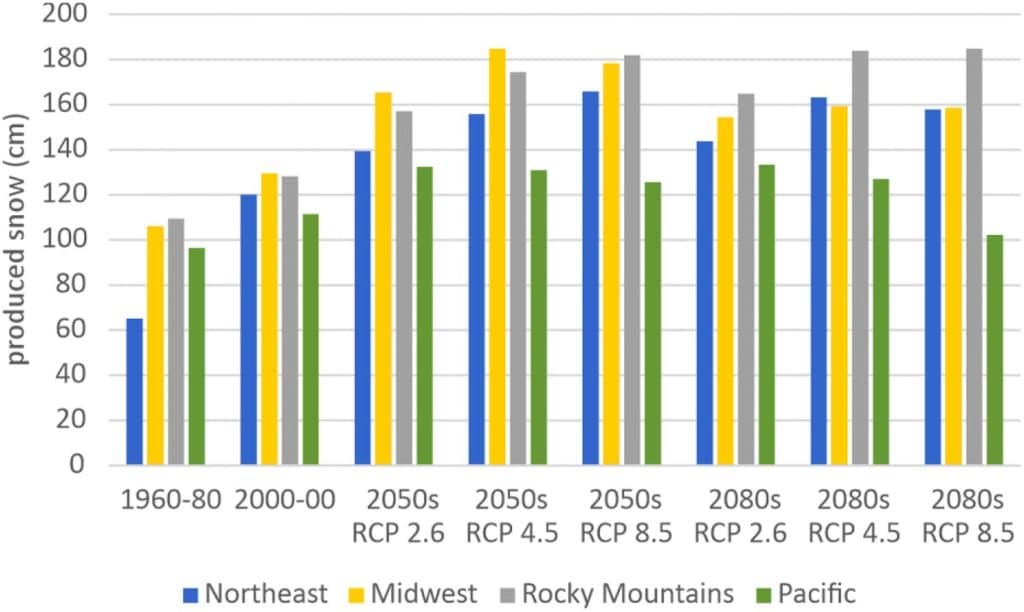Between 2000 and 2019, the average ski season in the country has shortened by almost a week.
—
Anthropogenic disruptions in the global climate system in recent years have significantly damaged the US ski industry, resulting in billions of dollars in economic losses, a new study has found.
Mountainous regions have been disproportionately affected by global warming, impacting snow cover and shortening the winter season. A recent assessment of human influence on Northern Hemisphere snow loss found a significant correlation between anthropogenic climate change and snow cover decline over the 1981-2020 period.
Among the industries most affected by these changes is ski tourism, as demonstrated in dozens of studies investigating the implications of climate change for ski operations sustainability and regional competitiveness.
According to the new study, which assessed more than 220 ski areas across four US regional ski markets, the average US ski season has shortened between 5.5 and 7.1 days in the 2000-2019 period, compared to 1960-1979, and it is expected to further shorten anywhere between 14-33 days and 27-62 days by 2050 in a low and high emissions scenario, respectively. This resulted in huge economic losses for the country’s ski industry, amounting to an average of $252 million a year and exceeding $5 billion over the past two decades. The costs of snow shortage come primarily in the form of loss revenue due to late opening or early closure of ski slopes and machine-made snow.

The US ski tourism industry – currently the largest in the world by number of skier visits – experienced a boom in the 1960s, during which 41% of all ski areas across the country began operating. Early signs of climate change in the 1970s pushed the industry to invest heavily in snowmaking technologies. By the mid-1980s, over 90% of ski operators in the Northeast and Midwest regions had implemented snowmaking and as of 2022, 89% of ski areas countrywide have such systems in place.
A 2022 study by the University of Basel warned that ski resorts will have to increase their reliance on artificial snow as global warming progresses. Given the elevated amount of water required for marking snow, from now until the end of the century, resorts’ water consumption is expected to increase by about 80%, up to 540 million litres compared with 300 million litres used today.
However, while artificial snow was first introduced as a way to adapt to snow shortage, a decline in the number of days with temperatures cool enough for snowmaking is making it increasingly difficult to maintain the skiing season.

“Climate change is an evolving business reality for the ski industry and the tourism sector,” said Daniel Scott, one of the researchers behind the study, adding that the peak ski season is past us.
Last year was the hottest in history globally and 2024 is already breaking records with extraordinary levels of heat across the world.
The US is not the only country affected by snow shortage. Last year, a record-breaking winter heatwave forced ski resorts across Europe to close early due to a lack of snow. The Pyrenees, one of Europe’s dream destinations for ski enthusiasts, have experienced a sharp decline in visitors and economic instability in recent years, owing to increasingly irregular snowfall patterns.
Many also believe that the future of the popular Winter Olympics – an event that every four years brings together about 3,000 athletes from all over the world to compete in 15 disciplines – is uncertain. According to a study from the University of Waterloo, at the current trend, only one of the 21 cities that hosted the games in the past 100 years will have a climate suitable for winter sports by the end of the current century.
Featured image: Keith Bryant/Flickr
You might also like: Snow in Peril: The Impact of Climate Change on Ski Resorts in the Pyrenees


















